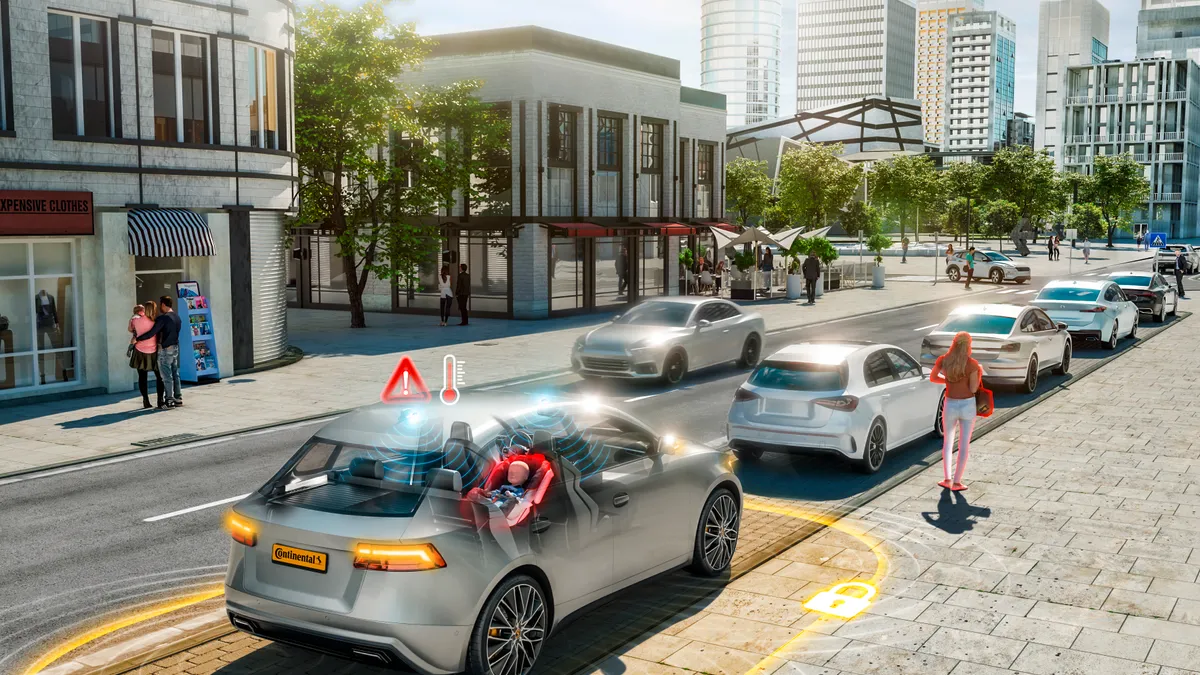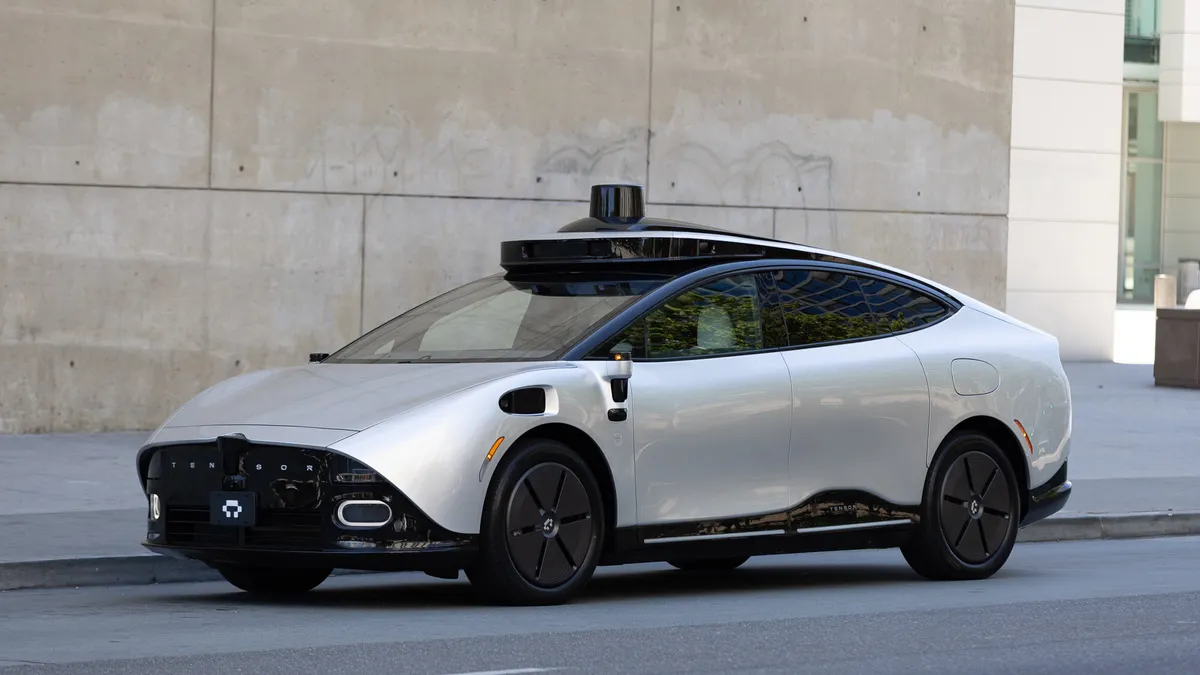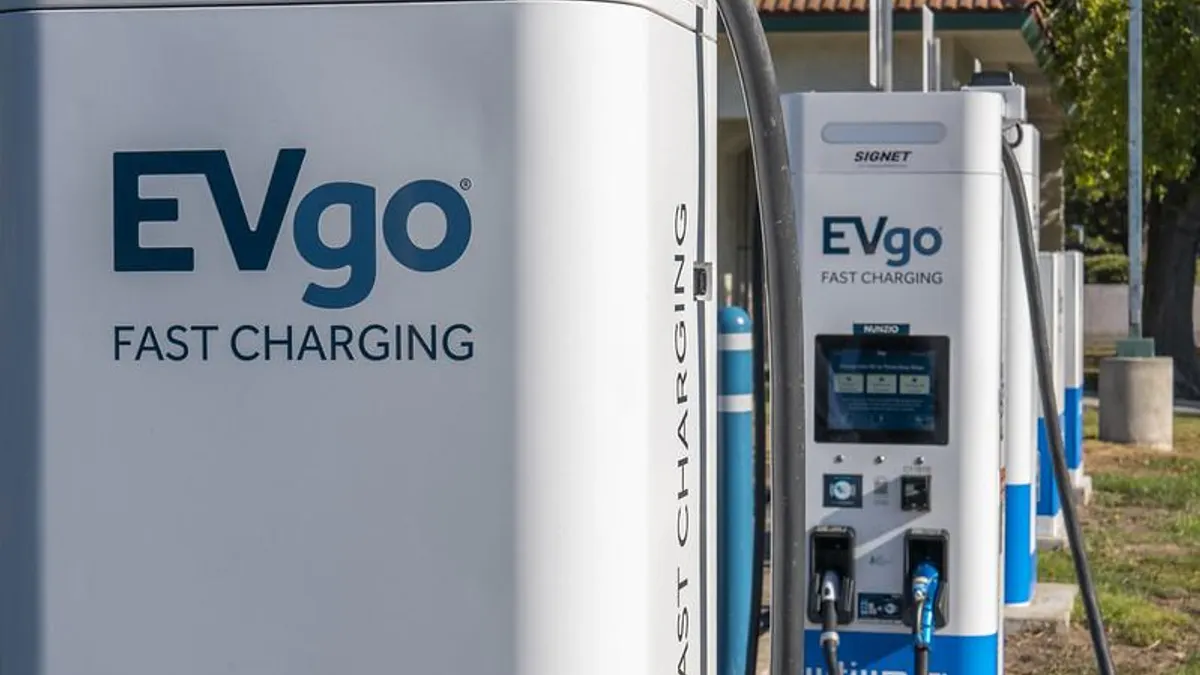Automotive supplier Continental announced last week that its ultra-wideband, hands-free vehicle access system can now detect the presence of a child in a vehicle and notify the driver’s smartphone within seconds.
In addition to potentially helping automakers boost their vehicle safety scores under the voluntary European New Car Assessment Programme, Continental said the technology might enable car manufacturers to comply with upcoming vehicle safety rules from the U.S. National Highway Traffic Safety Administration requiring automakers to install rear-seat alert systems in passenger cars that alert drivers to check their vehicle’s rear seats after they turn off their car.
But there’s a problem: NHTSA has not published its proposed rule, even though it was supposed to make it public in December. Moreover, the 2021 infrastructure law requires that the agency finalize the rule by Nov. 15, 2023. Some experts say that competing priorities, including implementing other infrastructure law provisions, and staff vacancies at NHTSA, may contribute to the delay.
With summer fast approaching, safety advocacy groups, Congress members and others are calling on NHTSA to speed up the rulemaking process, warning that further delays could lead to more children dying in hot cars.
“Seatbelts, air bags, better construction of cars have already saved countless lives and this simple step — a detection sensor — will in fact save lives,” Sen. Richard Blumenthal said in a statement last month. “The success that we’ve had in the Infrastructure Investment and Jobs Act is a major accomplishment, but the U.S. Department of Transportation is lagging in promulgating this rule. We can and must do more.”
Congress directed the U.S. Department of Transportation and NHTSA to issue the rule under the “hot cars” provision of the 2021 infrastructure law, aiming to reduce the number of children that die from heat stroke in hot cars. According to the safety advocacy group Kids and Car Safety, more than 1,050 children aged 14 and under died from heat stroke in hot cars between 1990 and 2022, with eight more deaths reported in 2023 as of Thursday.
Amber Rollins, director of Kids and Car Safety, said that her organization has been pushing for such a rule for over a decade, noting that the technology is well-established and inexpensive.
“It’s extremely frustrating that [NHTSA] is just sitting on this,” she said. “It should have been done years ago.”
In 2019, Ford, General Motors, Toyota and other automakers voluntarily agreed to install rear seat reminder systems in most new vehicles by 2025.
The Alliance for Automotive Innovation, which represents car and truck manufacturers in the U.S., said in November that more than 150 U.S. vehicle models include rear-seat reminder systems as standard or optional equipment. These systems include end-of-trip reminder systems that provide audible and visual alerts when a vehicle’s rear seats are occupied and occupant sensing systems that use motion detection to identify in-cabin occupants and alert drivers.
“This data indicates major progress toward our goal of universal rear seat reminder systems by 2025 — progress that has accelerated since our voluntary commitment to introduce the technology on all vehicles just three years ago,” John Bozzella, president and CEO of the Alliance for Automotive Innovation, said in a November statement.
But Rollins said the voluntary agreement is a “blatant attempt” by automakers to prevent further U.S. regulation, such as requiring car manufacturers to equip all passenger vehicles with more advanced child detection systems. Automakers were likely trying to preempt greater regulation, which could result in higher costs, she said.
“They have been shouting from the rooftops how proud they are of themselves for [the voluntary agreement]. The problem is that they know it’s not a comprehensive solution,” Rollins said. “It's, unfortunately, going to cost children their lives.”
The end-of-trip reminder systems required by the 2021 infrastructure law use simple door sequencing technology. At the end of each trip, these systems warn drivers to check the rear seats if they opened a rear door before they started driving.
While these systems offer some protection for children, they do not alert drivers in many everyday situations. For instance, if a driver stops for gas and does not open a rear door, they would not get an alert when they reach their final destination. They also don’t alert drivers if a child accesses a vehicle on their own — such scenarios account for 25% of all child deaths in hot cars, according to Kids and Car Safety. Rollins added that people might ignore audible and visual alerts if there are too many false alarms, which could limit their effectiveness.
She also said that, during meetings with safety advocates, officials at the Transportation Department and NHTSA “verbally committed” to proposing a rule that goes “above and beyond” the 2021 infrastructure law’s requirement to install basic rear-seat alert systems.
“They know that’s not enough,” she said.
Cathy Chase, president of Advocates for Highway and Auto Safety, a safety advocacy group, said her organization and others unsuccessfully lobbied to mandate child detection systems under the 2021 infrastructure law. She said safety advocates also wanted to require detection systems to monitor the entire cabin, not just the rear seats — the recommendation didn’t make it into the final legislation.
While detection systems are more advanced than simple alerts, the “technology is rudimentary” compared with autonomous vehicles, Chase said, noting that driverless cars will likely need a passenger detection system to know whether there’s someone in the car.
“We consider this a building block technology for AVs,” she said.
In an email, a NHTSA spokesperson said the agency is “continuing to identify and test rear seat occupant detection systems as they become available” and is studying whether existing vehicles can be retrofitted with the technology.
Continental did not respond to a request for comment.






















